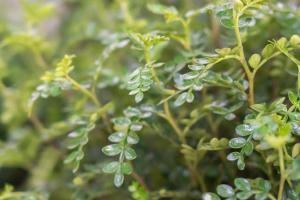How to Design Potted Plants
Designing potted plants is an art form that requires creativity and patience. With the right knowledge and technique, you can transform any space into a beautiful and tranquil oasis. In this article, we will explore the steps to designing potted plants and creating a visually appealing and functional display.
Choose the Right Plants
The first step to designing potted plants is to choose the right plants. Consider the lighting and temperature of your space, as well as the plant’s water and soil requirements. Additionally, take into account the overall style and aesthetic you want to achieve. Some popular options for potted plants include succulents, ferns, and flowering plants.
Select the Appropriate Containers
The next step is to select appropriate containers for your potted plants. Choose containers that complement the style and décor of your space, and that are the right size for your plants. Additionally, make sure that the containers have proper drainage to prevent overwatering and root rot.
Create a Color Scheme
A visually appealing display of potted plants requires a thoughtful color scheme. Consider the colors of the containers, the foliage, and the flowers when designing your display. You can choose a monochromatic scheme, or mix and match complementary colors to create a dynamic and interesting display.
Use Layers and Heights to Create Volume
Incorporating layers and heights into your display can create volume and interest. Place taller plants at the back of the display, and shorter plants in front. Additionally, use different heights of containers to elevate certain plants and create a more dynamic display.
Consider the Surroundings
When designing potted plants, it’s important to consider the surroundings. Take into account the other furniture and décor in the space so that the potted plants complement, rather than clash with, the rest of the room. Additionally, consider the placement of the potted plants in the space to maximise their visibility and impact.
Maintain and Care for Your Potted Plants
Finally, it’s important to maintain and care for your potted plants once they are put into place. Ensure that they receive the appropriate amount of sunlight and water, and regularly trim and prune the plants to keep them healthy and thriving. Additionally, remove dead or damaged leaves to ensure that the display remains visually appealing.
In conclusion, designing potted plants is an art form that requires careful consideration and attention to detail. By choosing the right plants, containers, color scheme, layers, and heights, and consider the surroundings, you can create a visually appealing and functional display that transforms any space into a tranquil and inviting oasis.

 how many times do yo...
how many times do yo... how many planted tre...
how many planted tre... how many pine trees ...
how many pine trees ... how many pecan trees...
how many pecan trees... how many plants comp...
how many plants comp... how many plants can ...
how many plants can ... how many plants and ...
how many plants and ... how many pepper plan...
how many pepper plan...
































